It’s time once again for the annual end-of-year musings we like to call Shadows and Reflections. Today Tim Dee looks back over the past 12 months.
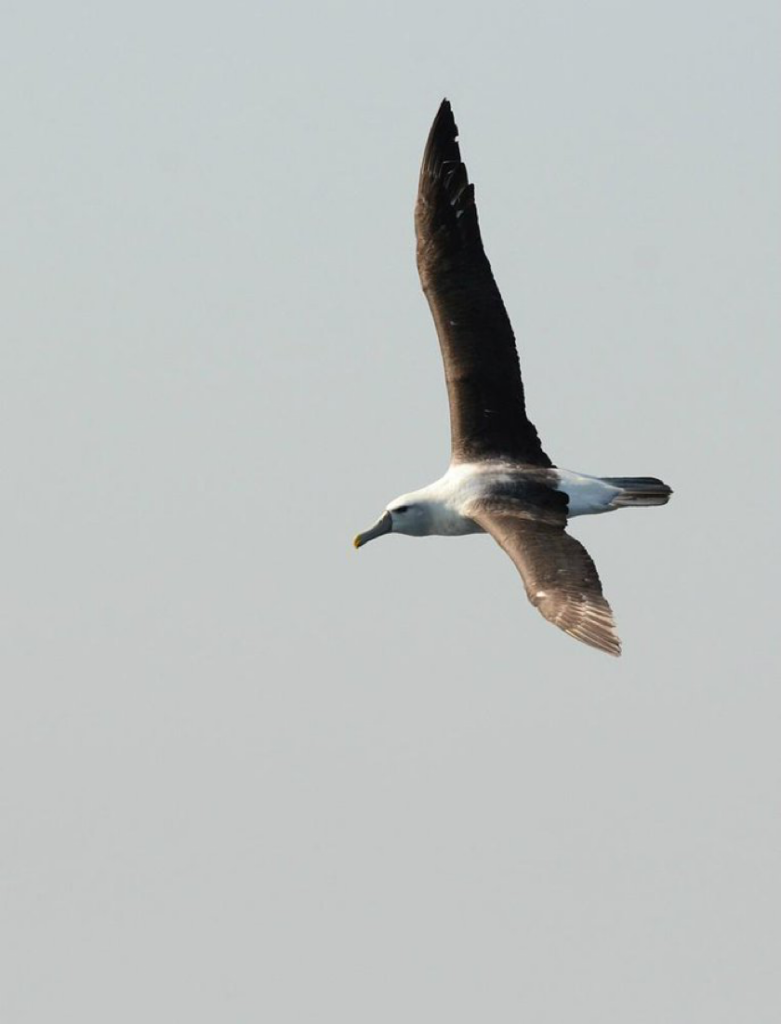
Head in the Sand
Albatross Rock lies just beneath the sea-skin of the Atlantic Ocean one kilometre off the beach at Olifantsbos on the Cape Peninsula in South Africa. It is about five kilometres south of Scarborough, the seaside village where I sometimes live. The rock is marked on large-scale maps and shipping charts; one indicates its place with a symbol for foul ground.
The rock’s hardware is submerged: I have never conclusively seen it, though from the shore I have often peered through my binoculars towards where it must be. What is visible, especially at low water, is the rock’s effect: the sea breaks open there, as if wounded, and white-water seethes, even when calm is all around. Such a hidden disturbance is hazardous to shipping. The Cape of Good Hope, sometimes also called the Cape of Storms, is just a few nautical kilometres further south. Vessels come close to the Cape as they pass into the Indian Ocean from the Atlantic. The sea is busy. Shipping lanes are also whale roads and seabird flyways. Every oceanic traveller desires the shortest journey and comes close to the shore, but none wish to collide with the land. Whales are undone when they beach and seabirds are said, like ships, to wreck when they crash out of their element. In winter, when storms play havoc with all marine traffic, I have seen albatrosses (black-browed and shy), steering the long-winged gantry of themselves just above the fretted water at the rock. However, the name of the place comes not from these birds but from a ship, the SS Albatross, a 74-ton steam screw tug, which, on 10 April 1863, during a local tramp around the Cape with a cargo of cotton, struck the rock and sank in twelve minutes with all its onboard stuff.
*
I have made myself an Albatross Rock. It is in my garden at Scarborough. A broken slate, found in a heap of building rubble outside our house, serves as a marker stone and tomb cover. Beneath it I buried the head of a shy albatross. I planted it in 2020 and this year I have dug it up.
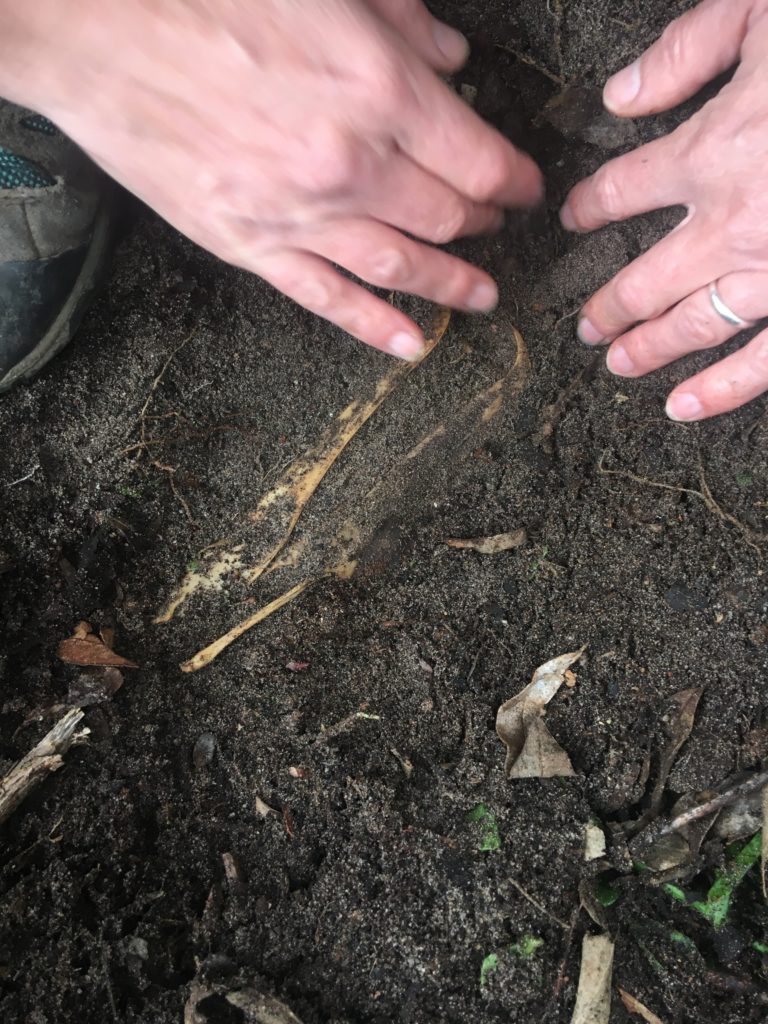
The crew of the Albatross safely made it ashore; the seabird I found dead on the sand. Wanting the skull, I cut the head from the bird’s body with a saw. On that day I didn’t think much about what lay behind my doing. Apart from banishing the Ancient Mariner from my mind – dead albatrosses have the habit of altering the lives of those close to them and not immediately for the better – what I recall is the urgency of my reach towards the new-found dead thing, and the certainty that I wanted to hold on to something of it. This year, having lived for more than twelve months alongside the buried head, I came to understand that, as well as acquiring a keepsake, some nature morte, for my nature-table, I was seeking, in the (eventual, dug up) hollow skull, some good negative energy which might ghost up from the skeletal remains – death lessons mostly, but life lessons too.
A skull, like any relic, arrives at the end of time and moves to one side of it, holding it off thereafter. Bones reach around the time of the living, and teach about the bodies of vital things, and the disappearance of the softness in those bodies, while their own stony hardness persists. They have half-lives and after-lives. It was thinking this that made me hope that what I had collected might see me out even as an eyeless and hollow skull. The albatross head was still feathered when I forked earth over it, the bird’s eyes still drying of their aqueous humour. The same head uprooted and magicked clean, I imagined making some purified bony utterance from beyond its non-existence, thereby somehow talking me down, as Yorick does to Hamlet, deadpan.
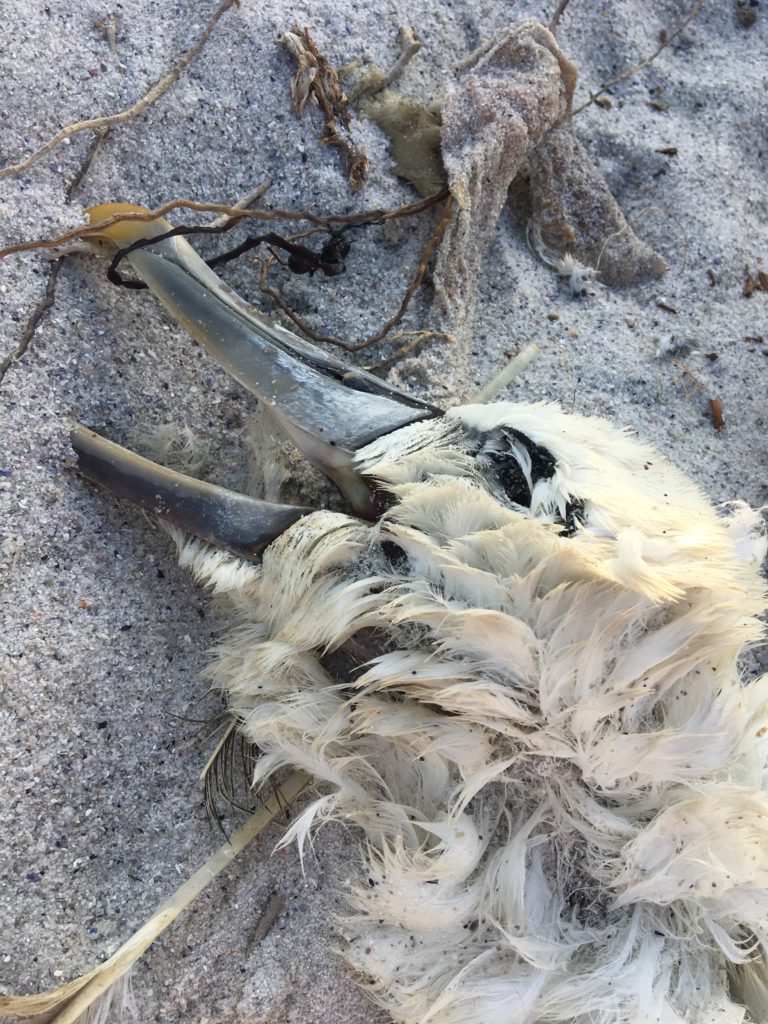
Unsevered, left on its body on the beach, the head would have gone the way of the feathers and flesh and the bird’s other bones and vanish into the golden-white keep and kist of sand. I could point to the spot where this happened to the remainder of the corpse but there is nothing to see. In much less than a year, the dead bird became beach.
A bombard of wind and a high spring tide first shrouded the body in a barrow of sand. Soon the remains started becoming sand. Sifting down, the dead albatross, bird matter, was granulated – grains of feather-sand, flesh-sand, bone-sand – and that joined the great mix: the sandstone grit of the Cape Peninsula’s worn backbone of rock on its long shift to the sea’s edge; and the bright grains of the calcareous shells of mussels and limpets and periwinkles; and the blackish and desiccated cellular residue of kelp, like tiny charcoal briquettes; and the shattered soap slivers of cuttlefish bones; and the blistered particles of sole-rubber from lost flip-flops; and the shiny-dull shards of sea-glass; and a trillion plastic nurdles like an excess of fish eggs cast drily adrift; and everything else that might be kept on the shore, which could be practically anything, and which all becomes part of the world-dust we know as sand.
The albatross remains – everything of it but its head – might still be a constituent of the high tideline place where I did my butchery – for two weeks afterwards I saw the beginnings of its end there (or, if you are an eyes-down and sand-gritted beach-comber, the end of its beginnings), or, disintegrating, parts of it might have been blown back out into the first of the sea and carried by saltwater currents, along with countless shifting sands, to form another, always moving, beach somewhere up or down the coast.
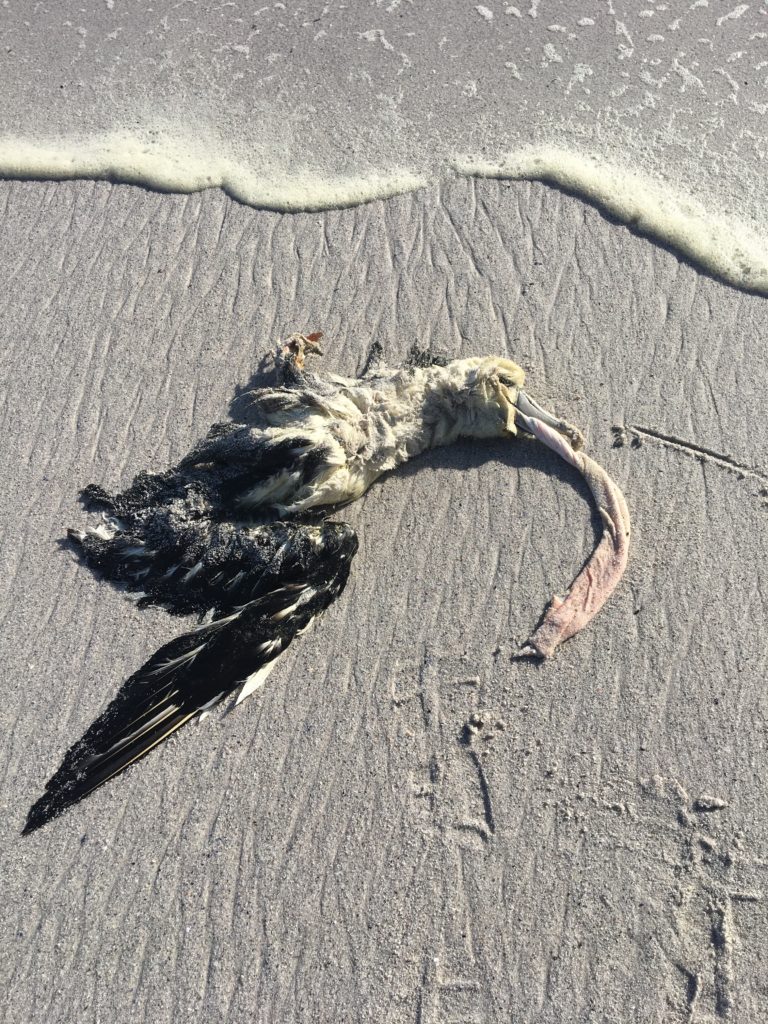
Three or four metres above sea level, half a kilometre away from the beach, buried just outside my bedroom in the soft machine of a gritty grave, I hoped for a different, more fixed, outcome for the head. I wanted worms and bacteria and fungus and mould to clean it, to keep it intact but to carry off everything that was not bone, strip the dirty cream feathers about the bird’s crown, flense the nicotine-yellow flesh at the tip of its beak and the greyish skin rings that circled its almond-lozenge eyes, scour its puckered eye-balls from their deep sockets, and eat out its brain.
Thus, bare and emptied, therefore perfect, I wanted it to speak to me (or for me) from the zone of our universe where radioactivity meets fossilization. I fancied taking a bony pulse. It would, I hoped, help me feel at home in time passing in this place – my new home – between mountain and ocean. It would also add to the bone diary I had started to keep in my recent years alongside my assembly (the poetry and other strong language we drape around us) of sundry stony articulations. There was an essay-poem by Rilke called ‘Primal Sound’ (1919) that imagines you might be able to put a phonograph needle into the coronal suture of a human skull, as in a record groove, and thereby play the life lived that is etched in that crack. There was a poem written in his old age by W.S. Merwin called ‘Antique Sound’ (2014) that recalls the poet and another teenage adventurer trying to get thorns, new picked from a bush, to be the needle to play into life a Beethoven string quartet otherwise locked in the black vinyl of a gramophone record. There were, in the Soviet Union (in the 1960s and 1970s), samizdat records, like flexi-discs, that were made when banned pop music was pressed on used sheets of X-ray film that had been purloined from public hospitals. Distributed clandestinely, the contraband was known as music on the bones.
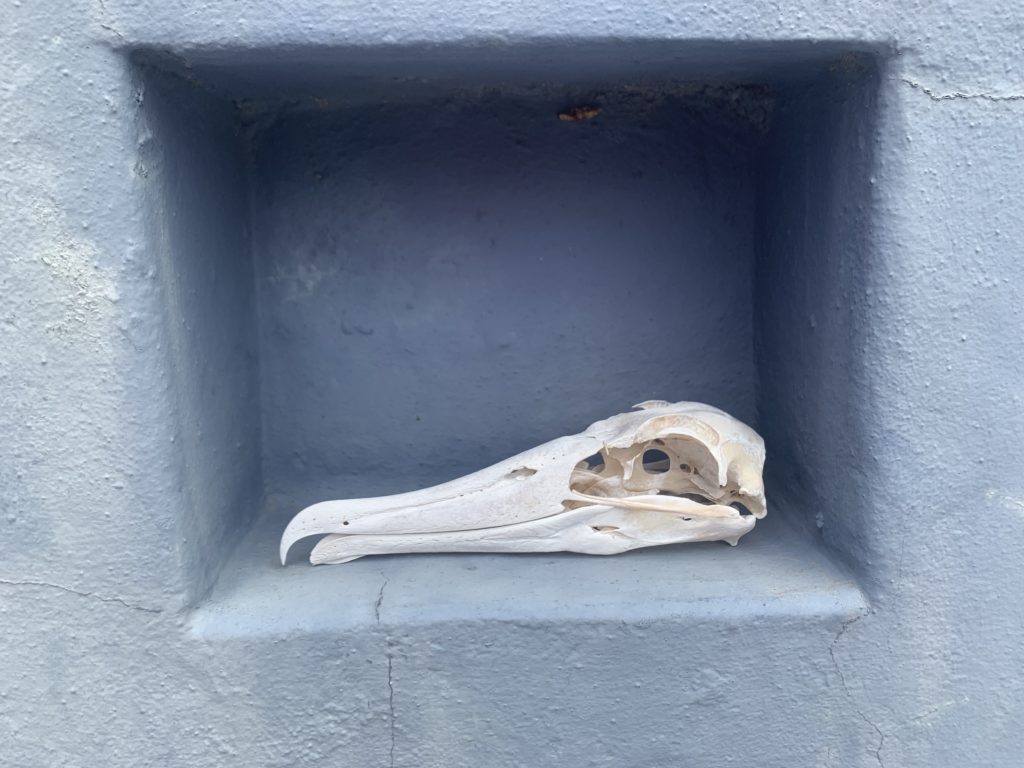
And now, the bare bone of my shy skull might answer or echo any of these living-dead wild tracks. Could I, by simply staring at its resting, like a beaked egg, on my palm, summon the oceanic life it had lived, far out and far from me, and accordingly shrink my own life, and my occupation of it, sufficiently and happily enough to think that a granulated end on a beach at the edge of a world-sea might be a good stop for anything or anyone?
I dug up the head. It is next to me now. Quiet and quietus.
*
For CBTR, this year, TD wrote to celebrate Richard Mabey’s eightieth birthday, then cluttered up the site for more than a week with his quarantine hotel diary on his first return to England in fourteen months, then found life in Will Burns’s fictitious pub, then enquired of Subway Sect’s new record what happens when a youth aesthetic turns grey, and finally described his experiences across fifty years of the Snowdon Aviary at London Zoo. His last book was ‘Greenery’; his next, which should include this albatross, will be called ‘Home Scars’.